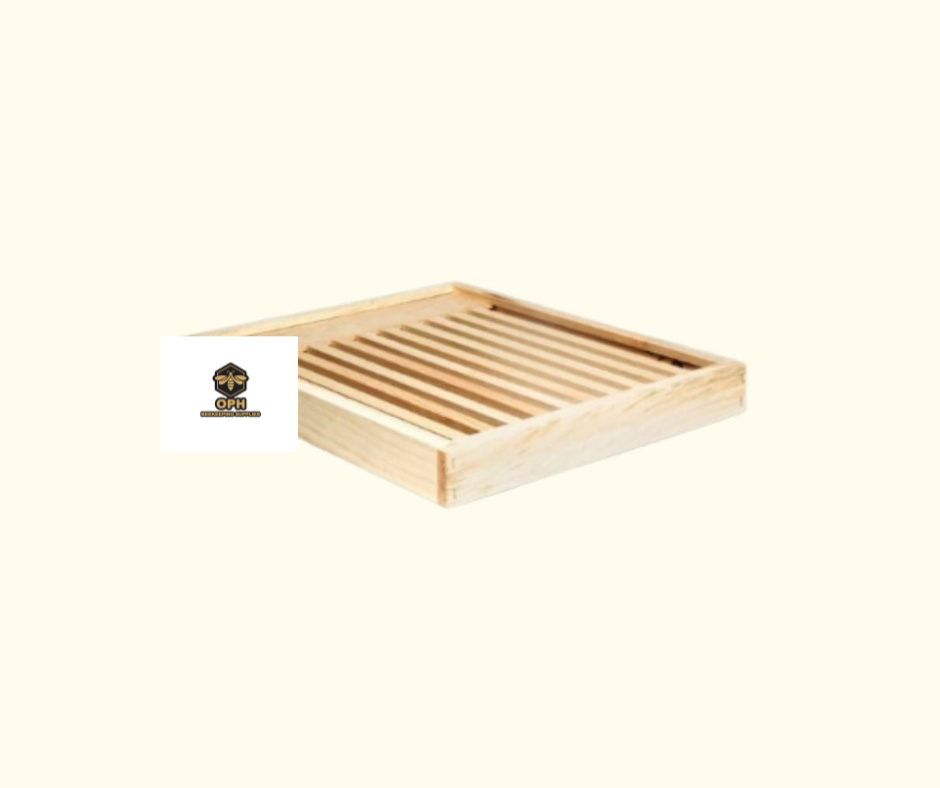
Should you Incorporate a Slatted Rack into Your Hive?
Share
Should You Incorporate a Slatted Rack Into Your Hive?
Beekeepers are always on the lookout for ways to improve the health and productivity of their hives. One tool that often sparks curiosity is the slatted rack. Though not as widely discussed as frames, feeders, or entrance reducers, slatted racks can offer significant advantages for hive management. This article explores what slatted racks are, their benefits, and how they might fit into your beekeeping setup.
What is a Slatted Rack?
A slatted rack is a wooden or plastic board with parallel slats that sits between the bottom board and the brood box. The slats run horizontally underneath the frames, aligning with the comb structure above. Unlike a traditional solid board, the slatted design provides ventilation, space, and insulation benefits for the hive.
Benefits of Using a Slatted Rack
-
Enhanced Hive Ventilation
One of the primary benefits of a slatted rack is improved airflow within the hive. The extra space beneath the brood frames allows better air circulation, helping to regulate hive temperature and moisture levels, particularly in hot or humid climates. -
Reduced Swarming Tendencies
Crowded hives are more likely to swarm. A slatted rack provides additional space beneath the brood chamber, creating a more comfortable environment and reducing congestion. This extra room can help bees feel less crowded, potentially delaying or preventing swarming. -
Increased Queen Egg-Laying Capacity
With more space and better temperature regulation, the queen is more likely to lay eggs in the lower portions of the brood frames. This expanded brood pattern leads to larger, more productive colonies. -
Protection for Overwintering Bees
During winter, a slatted rack provides a buffer zone that helps insulate the cluster. Bees can cluster lower in the hive, reducing drafts and cold air exposure. This added layer of protection can contribute to higher colony survival rates. -
Reduced Bottom Entrance Congestion
By providing additional space near the hive entrance, slatted racks reduce congestion during periods of heavy foraging. Worker bees can come and go more efficiently, improving hive productivity.
When and Why to Use a Slatted Rack
Slatted racks are especially beneficial if:
- You live in a region with extreme heat or humidity, where ventilation is critical.
- Your bees exhibit frequent swarming behavior, and you want to provide more space to discourage this tendency.
- You want to improve your hive's temperature management and reduce condensation during winter.
Potential Drawbacks
While slatted racks offer many benefits, there are a few considerations:
- Additional Equipment Cost: Slatted racks are an extra investment, and not all beekeepers feel the benefits justify the cost for every hive.
- Added Weight and Complexity: Adding a slatted rack increases the height of the hive, making inspections slightly more cumbersome.
- Not Always Necessary: In mild climates or for certain hive configurations, the ventilation benefits may not be as critical.
Installing and Using a Slatted Rack
Installing a slatted rack is simple:
- Placement: Position the slatted rack directly above the bottom board, with the slats running parallel to the frames in the brood box.
- Orientation: Ensure the solid edge (if present) faces the front entrance to help direct airflow.
Conclusion
Incorporating a slatted rack into your hive can offer numerous advantages, from better ventilation and reduced swarming to improved winter protection. While it’s not an essential piece of equipment for every beekeeper, it can be a valuable addition depending on your climate, hive management style, and goals. Evaluating your specific beekeeping needs will help you decide if a slatted rack is the right choice for your apiary.
